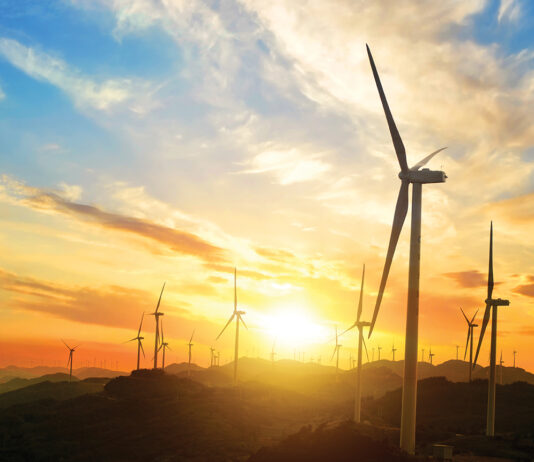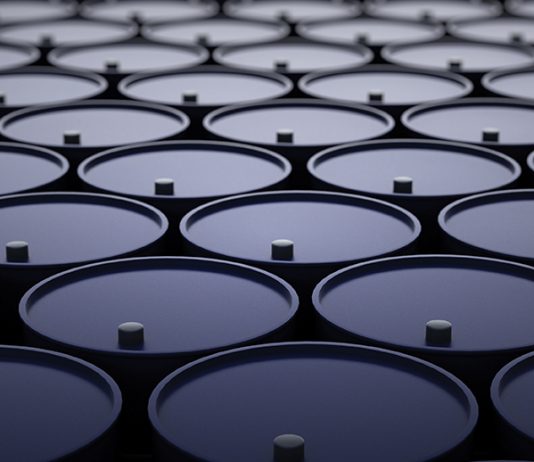
G7 agrees to Russian oil price cap, Putin shuts down Nord Stream, again, China locks down, again, widespread demand destruction, OPEC production cuts, unsustainable energy inflation across Europe, war in Ukraine, public sentiment, ESG visibility—
In a period defined by global uncertainty still coming out of a global pandemic and ensuing recession, what oil and gas plays remain relevant looking into Q4? We’ll explore the global events shaping modern energy policy and the attractiveness of ESG investments that are seeing a broader spectrum of investors.
Global Events
G7 Reaches Agreement On Russian Oil Price Cap
The Group of 7 (G7) finally agreed Friday on imposing a price cap for Russian oil. This cap has been discussed for months in response to Putin’s invasion of Ukraine. The aim of the proposed cap is one-part economic warfare and one part energy security. G7 members are looking to reduce Russia’s revenues on crude oil while also normalizing the price curb to avoid spikes. While the G7 agreed in principle to the cap, they have yet to impose it, let alone decide on the per-barrel level the cap imposes. These details would be determined “based on a range of technical inputs” and over some time, a source told Reuters.
Rather than a percentage based on market prices, the cap would be a set dollar amount for both Russian crude, as well as two other petroleum products. With the move, the G7 hopes to defund Putin’s war in Ukraine and help tame global inflation being affected by skyrocketing energy prices worldwide.
World’s Largest Oil Importer Locks Down…Again
China has been ramping back up widespread lockdowns in response to reported outbreaks of COVID variants. One region, Shenzhen, is known as being the technology manufacturing hub in China and just shut down public transportation across its main districts. Some 21 million residents in Chengdu were also recently locked down, in addition to the myriads of industries and critical exports. These lockdowns are incredibly costly when it comes to demand destruction for crude.
As the leading importer, even a hint of slackening demand is enough to send the volatile oil futures markets roiling. Decreased demand has helped consumers at the pump where the majority of U.S. consumers are paying less than $4 per gallon.
European Energy Crisis: Nord Stream 1 Shutdown, Price Caps, and Rationing
In the continuing drama of Putin’s Nord Stream 1 pipeline, the tap has once again been shut off. Amid wide criticism, Europe has seen months of delays and reduced capacity. Rumors abound as to the timing of “issues” Russia says the pipeline is experiencing and thus necessitating repairs. Heading into the winter months, Germany is one such example of a nation that has historically relied heavily on Russian gas to fill reserves enough to get them through winter. The reduction in supply has sent Germany scrambling and calls from the government for conservation as much as possible. The fear over lack of supply and other economic and geopolitical factors have sent the price of energy skyrocketing at an unsustainable rate.
These fears may continue as Russia responded to the G7’s statement by saying it would cut off any country that is implementing the cap from buying Russian oil. Bear in mind, that China and India are both in the top five leading global crude importers, and neither are members of the G7. If Putin carries out his threat of cutting off countries imposing caps, countries like the U.K., France, and Germany who are already facing sky-high fuel costs (Germany’s year ahead electricity rose some 500% in the past year), may face a truly bleak outlook in the middle of the upcoming winter months.
To make matters worse, France saw diminished output from its nuclear fleet and climate change is ravaging Europe with droughts, wildfires, and excessive heat. This has, in turn, lowered water levels and decreased hydroelectricity generation. Wind generation, too, is below seasonal norms. Countries are preparing for power shortages and considering rationing to maintain critical demand infrastructure this winter. Soaring energy costs are also rippling across other industries, with scores of companies announcing cutbacks, including one of Europe’s largest zinc smelters. “We are already seeing industrial demand destruction as gas prices continue to rally,” said Kesavarthiniy Savarimuthu, of BloombergNEF, in a recent article.
OPEC Production Cuts
The announcement from the G7 didn’t do much to move the needle on benchmark crude prices already digesting news from OPEC+ to reduce output. This “circling of the wagons” from OPEC is meant to stabilize global supply and demand which has been diverging from technical outputs. Interestingly, the announcement from OPEC comes just one month after Biden’s visit to request more oil from Saudi Arabia. Despite pledging billions in advanced U.S. weapons sales, Saudi Arabia is on board with the proposed production cuts, possibly in part due to the potential for the Tehran Nuclear Deal with Iran. If it moves forward, the deal could potentially see a large influx of Iranian oil to the markets. Oil markets have rallied on the news from OPEC.
As of 9/2/22, Brent crude futures were up $1.73, or 1.9%, at $94.09 a barrel by 1350 GMT, while U.S. West Texas Intermediate (WTI) crude futures advanced $1.69, or 2%, to $88.30, according to Reuters.
Opportunities in Oil and Gas
With all the volatility, are there any bright spots in oil and gas? Fortunately, yes and the typical investor dynamic is changing as well. The rise of Environmental, Social, Governance (ESG) investing has showcased an appetite not just for a solid bottom line but a desire to see sustainability in action. “Socially responsible investing” or “impact investing” looks beyond typical financial factors to see conservation, how the company treats people, and how a company is managed.
With majors collectively already and continuing to invest billions in research and development of global environmental projects, including:
- Resilient hydrogen
- Bioenergy
- Sustainable aviation fuel
- Expanded EV charging
- Wind and solar at-scale
- Offshore energy
- Green hydrogen plants
- Cutting CO2 emissions
- Carbon capture and storage
- And so much more!
Just counting Chevron, bp, Shell, and ExxonMobil, these companies have a combined $26.6 billion over the next several years devoted to net-zero and decarbonization initiatives. In a surprising twist, ESG funds are starting to recognize the impact oil majors bring to the table. As you might expect, Shell, Exxon, and Chevron all have high risks of exposure to the types of factors ESG investors look at.
Morningstar grades both exposure risk and management, which is how well a company is managing its relevant ESG issues. While their exposure is high, Shell, Exxon, and Chevron all carry “strong” management ratings, which, according to Morningstar, refers to the “robustness of their ESG programs, practices, and policies.” Three top oil majors all strongly managing their ESG programs, practices, and policies stand at odds with the Whitehouse narrative that continually vilifies oil and gas.
Defeating the Oil and Gas Leasing Moratorium
Texas Attorney General Ken Paxton, along with 12 other plaintiff states, were given a major win when a federal judge in Louisiana sided with the injunction against the Biden Aministraion’s moratorium on oil and gas leasing on federal public lands and offshore waters. “Joe Biden may have declared war on American energy independence, but we’re fighting back and we’re winning in court,” said Attorney General Paxton in a press release from the Texas AG’s office. “The executive order was a clear example of unconstitutional federal overreach, and I’m pleased to see the court make the right decision in issuing a permanent injunction to prevent it from taking effect.”
Many states, including Texas, rely on tax revenue to fund their government. Standing against Biden’s attacks on oil and gas, the Texas Comptroller announced on August 1, that the Texas oil and gas industry had just provided a record-breaking windfall in tax revenue. In July, the oil production tax generated a whopping $694 million in tax revenue, and natural gas provided another $532 million. Together, that’s $1.23 billion in tax revenue for Texas from oil and gas in one month. That’s new roads built, parks maintained, and a better overall quality of life.
Put Together the Pieces in Oil and Gas with Shale Magazine
At Shale Magazine, we report on current events with the facts that matter most to oil and gas stakeholders. To gain fresh insights, make sure to check out our latest issues. You’ll find new opportunities for networking and events, see our one-on-ones with top industry execs, and all the latest news from upstream, midstream, and downstream.

Tyler Reed began his career in the world of finance managing a portfolio of municipal bonds at the Bank of New York Mellon. Four years later, he led the Marketing and Business Development team at a high-profile civil engineering firm with a focus on energy development in federal, state, and local pursuits and picked up an Executive MBA from the University of Florida along the way. Following an entrepreneurial spirit, he founded a content writing agency servicing marketing agencies, PR firms, and enterprise accounts on a global scale. A sought-after television personality and featured writer in too many leading publications to list, his penchant for research delivers crisp and intelligent prose his audience continually craves.
If you would like to contact our staff writers, you can reach them at [email protected]
















